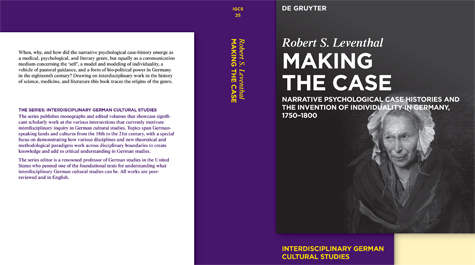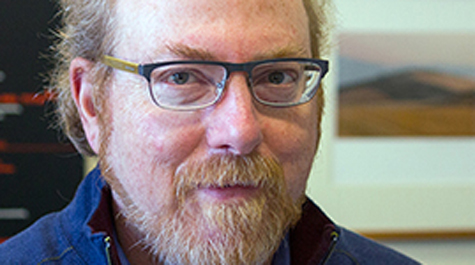Leventhal's new book examines emergence of psychological case histories in Germany
When illustrating the impact of case histories in analyzing human behavior over time, William & Mary Associate Professor Robert S. Leventhal sometimes finds it easier to reference modern day pop culture.
“People have to just turn on their TVs and watch ‘NCIS,’” Leventhal said.
To get to ‘NCIS’ or the Netflix show ‘Mindhunter,’ another Leventhal favorite, the case history genre first needed to be established in the late 19th century by noted psychologist Sigmund Freud.
Case histories are records describing the backgrounds of an individual or group. These could contain medical information or family records among any number of details.
Leventhal, W&M’s program director of German Studies and Judaic Studies, did extensive research on the emergence of the case history during the Freud era, and he went back even further to study the medium. Leventhal’s book on the subject, “Making the Case: Narrative Psychological Case Histories and the Invention of Individuality in Germany, 1750-1800” was recently published by de Gruyter in Berlin, Germany.
Case histories are used extensively in psychology and law enforcement and can be found in literature and, as previously noted, television. ‘Mindhunter’ is a current TV series based on a true-crime book that explores the origins of the Behavioral Sciences Unit at the FBI and how a serial killer’s mind works.
“When we see these extreme cases, these fascinating cases, it’s not a simple calculus,” Leventhal explains. “It’s not like plugging in a set of facts under an existing law. The case is precisely that instance that poses a question that asks, ‘How is it that we adjudicate between this set of facts and the existing law?’”
W&M News asked Leventhal to discuss a few of the book’s main points.
How did you come up with the topic for this book?
I had always been interested in psychoanalysis and the history of psychoanalysis. And I asked: How was it that Freud came upon the genre of the case history? Why did Freud choose the case history as the medium for the explication of his theory of the human psyche? He used this genre extensively, the very famous case histories between 1890 and 1915. So I started to delve more deeply into the pre-history of the case history. And of course, it has very deep roots going back to antiquity. But specifically, I was interested in three different areas where it seemed to be extremely important: jurisprudence, theology, and medicine.

I researched the genesis of the case and the case history through those three disciplines, and my research pointed towards the 18th century as a pivotal moment where the case history breaks ranks with what had come before it in theology, jurisprudence and medicine. And we have a new genre emerging and that is the narrative psychological case history, which we know today very well, not only from Freud himself, but now in all disciplines throughout the social sciences. We have cases that are presented as interesting, thought worthy, problematic instances of something that seems to break with normative rules or standards. So that was how I came to the topic. And it's in Germany, specifically in the 18th century, that this genre emerges and achieves an incredible standing, not merely for proto psychologists and psychiatrists, but in the literary world and the literate public as well.
What can you share about the case histories you studied?
One of the chapters in the book is actually concerning an alleged demonic possession of a Jewish woman in Schaumburg-Lippe, a principality in Germany in 1744. This is a 120-page protocol of this young Jewish woman, and I sought to understand why is it suddenly that a whole range of pastoral figures, the privy councillors, the medical counselors and physicians, two Rabbis, two priests and the prince of Schaumburg-Lippe himself, why do they all become involved in this case? And it seems to me that we have this moment where suddenly mental illness gets on the radar.
We have an emerging “science of the state” or “policy of the state”, and civil servants and state officials are getting interested. What is it about our population that we have to be concerned about? This is in the age of enlightened absolutism, so the question is how can we create and sustain a healthy, vibrant state? What risks have to be addressed in regards to both individuals and the population as a whole? In this case, one witnesses the entire state apparatus coming to bear on this individual case of mental illness.
There’s this real cross pollination between literature and medicine, literature and proto psychology in the 18th century, and that's really what the book is about. I delved very deeply into the case histories themselves to get at why it really mattered to create a narrative and tell the story of the individual, and plot the relation, as Freud said, between the symptoms of an illness and the history of a patient’s suffering.
How is this research relevant to our current time?
I think more to the point was really how this shaped our modern notion of the individual. We live in a culture of cases now. You see it all over the media, but what I wanted to understand and what struck me as being so fascinating is that we became this culture obsessed with the case. So in addition to autobiography on the one hand, and the novel on the other, which are two genres that helped forge our modern notion of the individual, what was left out of this equation was the case. And that's where my book fills in the gap.















